WARREN BUFFETT ON THE STOCK MARKET
(Abridged, For Educational Use Only.
This is a classic illustration on the stock market trends of the future by Warren Buffett)
FORTUNE
Thursday, December 6, 2001
By Carol Loomis
From Fortune Magazine:
"Two years ago, following a July 1999 speech by Warren Buffett, chairman of Berkshire Hathaway, on the stock market--a rare subject for him to discuss publicly--FORTUNE ran what he had to say under the title Mr. Buffett on the Stock Market (Nov. 22, 1999). His main points then concerned two consecutive and amazing periods that American investors had experienced, and his belief that returns from stocks were due to fall dramatically. Since the Dow Jones Industrial Average was 11194 when he gave his speech and recently was about 9900, no one yet has the goods to argue with him.
So where do we stand now--with the stock market seeming to reflect a dismal profit outlook, an unfamiliar war, and rattled consumer confidence? Who better to supply perspective on that question than Buffett?
The thoughts that follow come from a second Buffett speech, given last July at the site of the first talk, Allen & Co.'s annual Sun Valley bash for corporate executives. There, the renowned stockpicker returned to the themes he'd discussed before, bringing new data and insights to the subject. Working with FORTUNE's Carol Loomis, Buffett distilled that speech into this essay, a fitting opening for this year's Investor's Guide. Here again is Mr. Buffett on the Stock Market. "
Warren Buffett:
The last time I tackled this subject, in 1999, I broke down the previous 34 years into two 17-year periods, which in the sense of lean years and fat were astonishingly symmetrical. Here's the first period. As you can see, over 17 years the Dow gained exactly one-tenth of one percent.
Dow Jones Industrial Average
Dec. 31, 1964: 874.12
Dec. 31, 1981: 875.00
And here's the second, marked by an incredible bull market that, as I laid out my thoughts, was about to end (though I didn't know that).
Dow Industrials
Dec. 31, 1981: 875.00
Dec. 31, 1998: 9181.43
Now, you couldn't explain this remarkable divergence in markets by, say, differences in the growth of gross national product. In the first period--that dismal time for the market--GNP actually grew more than twice as fast as it did in the second period.
Gain in Gross National Product
1964-1981: 373%
1981-1998: 177%
So what was the explanation? I concluded that the market's contrasting moves were caused by extraordinary changes in two critical economic variables--and by a related psychological force that eventually came into play.
Here I need to remind you about the definition of "investing," which though simple is often forgotten. Investing is laying out money today to receive more money tomorrow.
That gets to the first of the economic variables that affected stock prices in the two periods--interest rates. In economics, interest rates act as gravity behaves in the physical world. At all times, in all markets, in all parts of the world, the tiniest change in rates changes the value of every financial asset. You see that clearly with the fluctuating prices of bonds. But the rule applies as well to farmland, oil reserves, stocks, and every other financial asset. And the effects can be huge on values. If interest rates are, say, 13%, the present value of a dollar that you're going to receive in the future from an investment is not nearly as high as the present value of a dollar if rates are 4%.
So here's the record on interest rates at key dates in our 34-year span. They moved dramatically up--that was bad for investors--in the first half of that period and dramatically down--a boon for investors--in the second half.
Interest Rates, Long-Term Government Bonds
Dec. 31, 1964: 4.20%
Dec. 31, 1981: 13.65%
Dec. 31, 1998: 5.09%
The other critical variable here is how many dollars investors expected to get from the companies in which they invested. During the first period expectations fell significantly because corporate profits weren't looking good. By the early 1980s Fed Chairman Paul Volcker's economic sledgehammer had, in fact, driven corporate profitability to a level that people hadn't seen since the 1930s.
The upshot is that investors lost their confidence in the American economy: They were looking at a future they believed would be plagued by two negatives. First, they didn't see much good coming in the way of corporate profits. Second, the sky-high interest rates prevailing caused them to discount those meager profits further. These two factors, working together, caused stagnation in the stock market from 1964 to 1981, even though those years featured huge improvements in GNP. The business of the country grew while investors' valuation of that business shrank!
And then the reversal of those factors created a period during which much lower GNP gains were accompanied by a bonanza for the market. First, you got a major increase in the rate of profitability. Second, you got an enormous drop in interest rates, which made a dollar of future profit that much more valuable. Both phenomena were real and powerful fuels for a major bull market. And in time the psychological factor I mentioned was added to the equation: Speculative trading exploded, simply because of the market action that people had seen. Later, we'll look at the pathology of this dangerous and oft-recurring malady.
Two years ago I believed the favorable fundamental trends had largely run their course. For the market to go dramatically up from where it was then would have required long-term interest rates to drop much further (which is always possible) or for there to be a major improvement in corporate profitability (which seemed, at the time, considerably less possible). If you take a look at a 50-year chart of after-tax profits as a percent of gross domestic product, you find that the rate normally falls between 4%--that was its neighborhood in the bad year of 1981, for example--and 6.5%. For the rate to go above 6.5% is rare. In the very good profit years of 1999 and 2000, the rate was under 6% and this year it may well fall below 5%.
So there you have my explanation of those two wildly different 17-year periods. The question is, How much do those periods of the past for the market say about its future?
To suggest an answer, I'd like to look back over the 20th century. As you know, this was really the American century. We had the advent of autos, we had aircraft, we had radio, TV, and computers. It was an incredible period. Indeed, the per capita growth in U.S. output, measured in real dollars (that is, with no impact from inflation), was a breathtaking 702%.
The century included some very tough years, of course--like the Depression years of 1929 to 1933. But a decade-by-decade look at per capita GNP shows something remarkable: As a nation, we made relatively consistent progress throughout the century. So you might think that the economic value of the U.S.--at least as measured by its securities markets--would have grown at a reasonably consistent pace as well.
The U.S. Never Stopped Growing
Per capita GNP gains crept in the 20th century's early years.
But if you think of the U.S. as a stock, it was overall one helluva mover.
Year 20th-Century growth in per capita GNP
(constant dollars)
1900-10 29%
1910-20 1%
1920-30 13%
1930-40 21%
1940-50 50%
1950-60 18%
1960-70 33%
1970-80 24%
1980-90 24%
1990-2000 24%
That's not what happened. We know from our earlier examination of the 1964-98 period that parallelism broke down completely in that era. But the whole century makes this point as well. At its beginning, for example, between 1900 and 1920, the country was chugging ahead, explosively expanding its use of electricity, autos, and the telephone. Yet the market barely moved, recording a 0.4% annual increase that was roughly analogous to the slim pickings between 1964 and 1981.
Dow Industrials
Dec. 31, 1899: 66.08
Dec. 31, 1920: 71.95
In the next period, we had the market boom of the '20s, when the Dow jumped 430% to 381 in September 1929. Then we go 19 years--19 years--and there is the Dow at 177, half the level where it began. That's true even though the 1940s displayed by far the largest gain in per capita GDP (50%) of any 20th-century decade. Following that came a 17-year period when stocks finally took off--making a great five-to-one gain. And then the two periods discussed at the start: stagnation until 1981, and the roaring boom that wrapped up this amazing century.
To break things down another way, we had three huge, secular bull markets that covered about 44 years, during which the Dow gained more than 11,000 points. And we had three periods of stagnation, covering some 56 years. During those 56 years the country made major economic progress and yet the Dow actually lost 292 points.
How could this have happened? In a flourishing country in which people are focused on making money, how could you have had three extended and anguishing periods of stagnation that in aggregate--leaving aside dividends--would have lost you money? The answer lies in the mistake that investors repeatedly make--that psychological force I mentioned above: People are habitually guided by the rear-view mirror and, for the most part, by the vistas immediately behind them.
The first part of the century offers a vivid illustration of that myopia. In the century's first 20 years, stocks normally yielded more than high-grade bonds. That relationship now seems quaint, but it was then almost axiomatic. Stocks were known to be riskier, so why buy them unless you were paid a premium?
And then came along a 1924 book--slim and initially unheralded, but destined to move markets as never before--written by a man named Edgar Lawrence Smith. The book, called Common Stocks as Long Term Investments, chronicled a study Smith had done of security price movements in the 56 years ended in 1922. Smith had started off his study with a hypothesis: Stocks would do better in times of inflation, and bonds would do better in times of deflation. It was a perfectly reasonable hypothesis.
But consider the first words in the book: "These studies are the record of a failure--the failure of facts to sustain a preconceived theory." Smith went on: "The facts assembled, however, seemed worthy of further examination. If they would not prove what we had hoped to have them prove, it seemed desirable to turn them loose and to follow them to whatever end they might lead."
Now, there was a smart man, who did just about the hardest thing in the world to do. Charles Darwin used to say that whenever he ran into something that contradicted a conclusion he cherished, he was obliged to write the new finding down within 30 minutes. Otherwise his mind would work to reject the discordant information, much as the body rejects transplants. Man's natural inclination is to cling to his beliefs, particularly if they are reinforced by recent experience--a flaw in our makeup that bears on what happens during secular bull markets and extended periods of stagnation.
Andres Agostini
Preferred Sites:
www.AgosBlogs.blogspot.com
www.AndyBelieves.Blogspot.com
www.AndyBelieves2.blogspot.com
www.AndresAgostini.blogspot.com
www.youtube.com/watch?v=tOHiKT127DM


















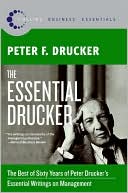































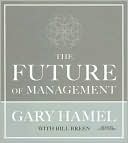



















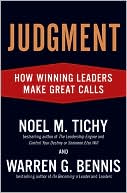














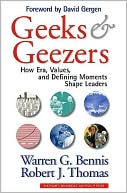







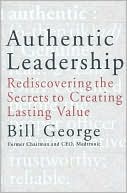








































































No comments:
Post a Comment